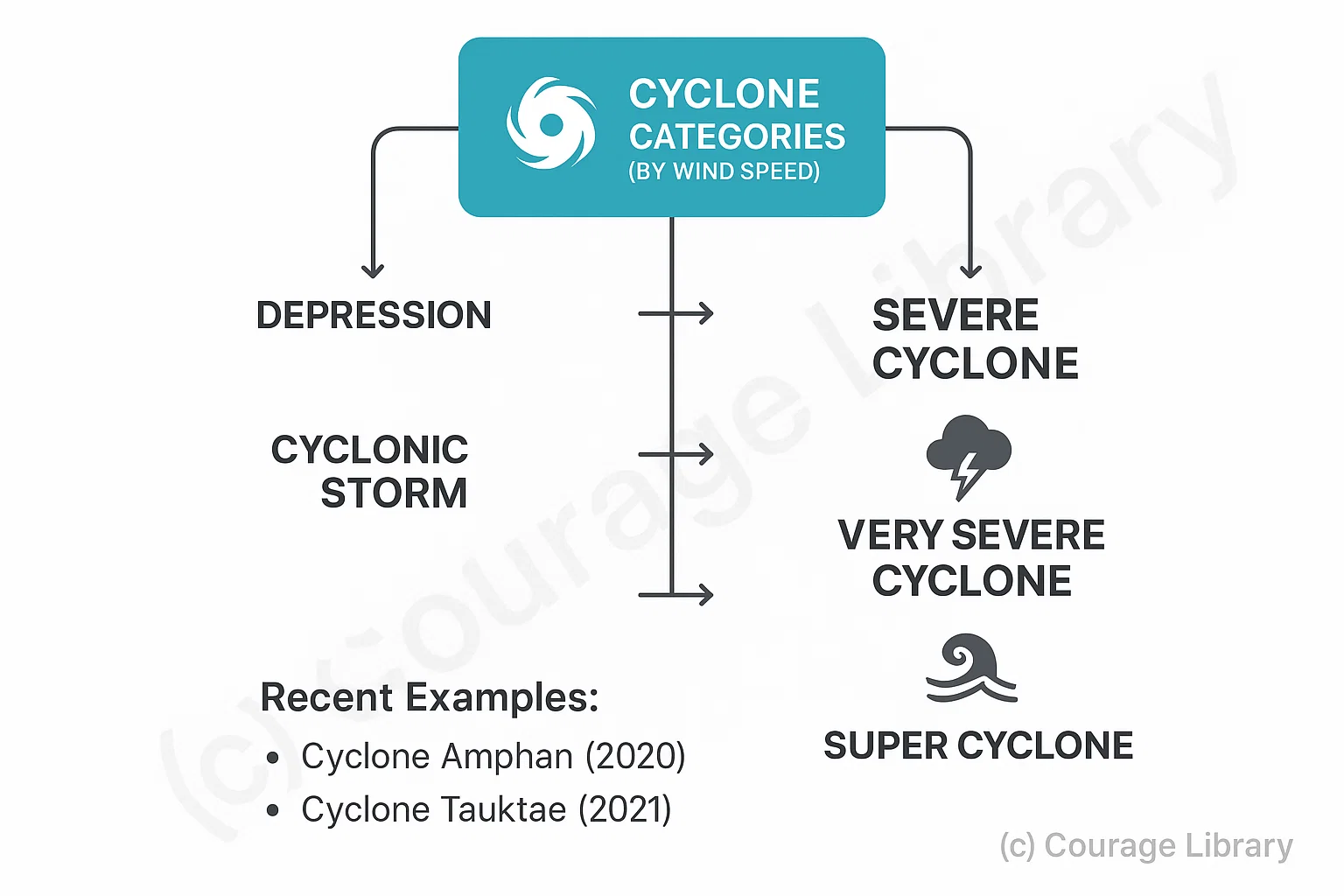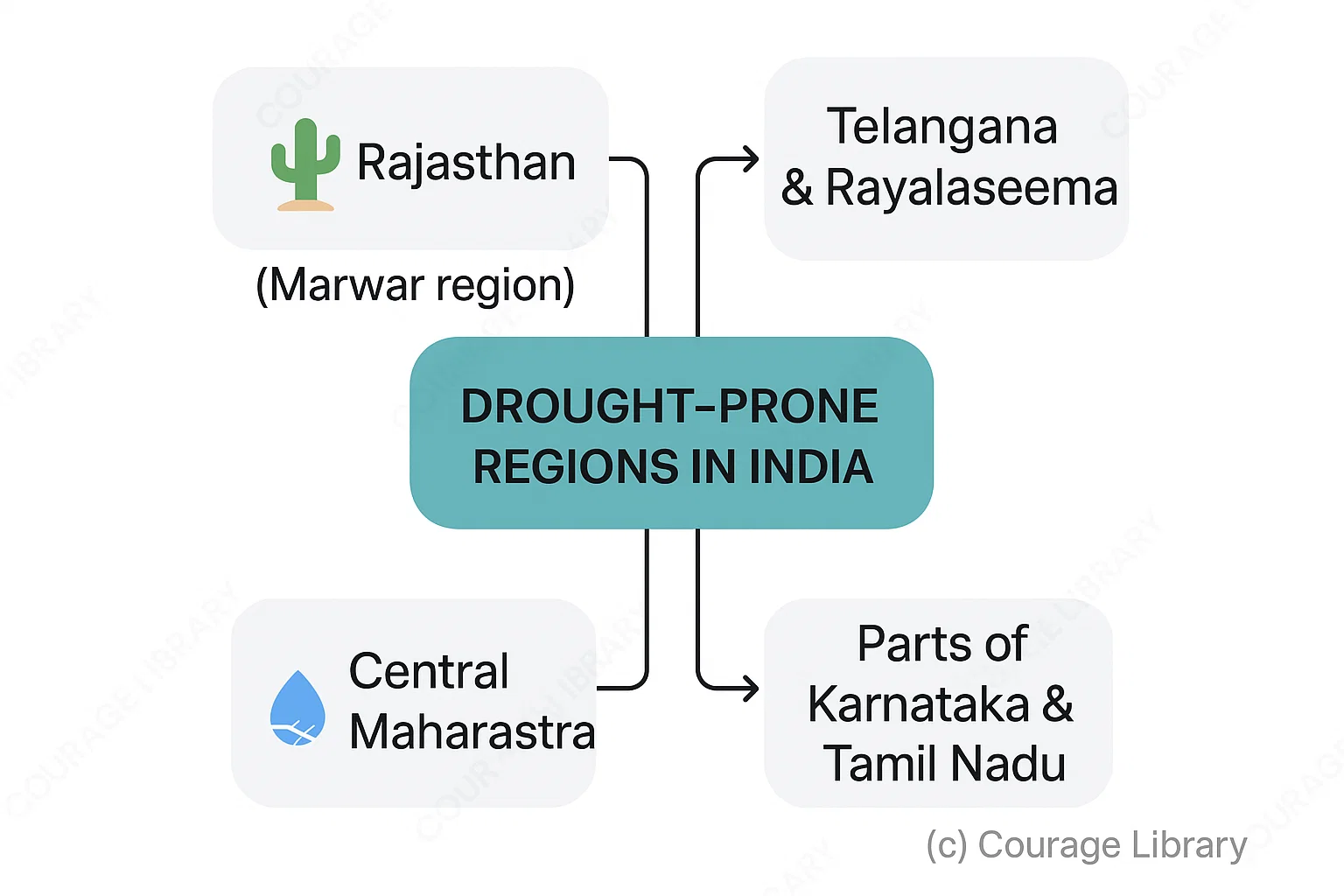SSC CGL - Detailed Guide 2025
Self-Paced Course

Climate of India
Reference: Lucent GK, NCERT Class 6–12
India’s climate is strongly influenced by the
Himalayas and the Indian Ocean.
It has a tropical monsoon climate — characterized by distinct seasonal
variations in temperature and rainfall.

1. Monsoon: Onset, Retreat & Types
The Indian monsoon is the dominant climatic feature — accounting for over 75% of annual rainfall.
A. Onset of Monsoon
| Feature | Details |
|---|---|
| Usual Onset | Around June 1st in Kerala (monsoon begins here) |
| Progression | Moves northward, covering most of India by mid-July |
| Trigger | Differential heating of land and sea; low pressure over NW India |
Monsoon is carried by South-West Monsoon winds from Indian Ocean.
B. Retreat of Monsoon
| Feature | Details |
|---|---|
| Begins | From northwest India in early October |
| Direction | Withdraws from NW to SE (reverse order of onset) |
| Weather | Clear skies, increased temperature, high humidity in coastal areas |
Results in North-East Monsoon — particularly affects Tamil Nadu & SE coast.
C. Types of Monsoon Winds
| Type of Wind | Direction | Season | Brings Rain? |
|---|---|---|---|
| South-West Monsoon | Sea to land | June–Sept | Yes (main rainy season) |
| North-East Monsoon | Land to sea | Oct–Dec | Yes, in Tamil Nadu |
Seasons in India
India experiences four major seasons as per the Indian Meteorological Department (IMD):
| Season | Duration | Features |
|---|---|---|
| Summer (Pre-monsoon) | March to May | Hot, dry; temperatures > 45°C in north India |
| South-West Monsoon | June to September | Heavy rainfall in most parts of India |
| Retreating Monsoon | October to November | Decline of rainfall; NE monsoon hits SE coast |
| Winter (Post-monsoon) | December to February | Cold in north; mild in south; fog common in Indo-Gangetic plain |
Rainfall Pattern and Distribution
India’s rainfall is highly seasonal, unevenly distributed, and largely monsoonal.
A. Annual Rainfall Zones
| Zone | Rainfall (mm) | Region Examples | Remarks |
|---|---|---|---|
| Very High | > 200 cm | Meghalaya, Western Ghats | Wettest parts of India |
| High | 100–200 cm | Eastern states, West Coast, Northern Plains | Major agricultural belts |
| Moderate | 50–100 cm | Peninsular Interior, Deccan Plateau | Semi-arid zones |
| Low | < 50 cm | Rajasthan, Ladakh | Desert or cold desert zones |
Note: Mawsynram (Meghalaya) is the wettest place on Earth.
B. Factors Affecting Rainfall Distribution
- Relief (orography): Windward sides get more rain (e.g., Western Ghats)
- Latitude: Tropical zones receive more rain
- Distance from Sea: Coastal areas receive more
- Jet Streams: Westerly & tropical easterly jets influence monsoon intensity

Natural Disasters in India
India is vulnerable to several climate-related disasters due to its vast geography and varied climate.
A. Cyclones
| Feature | Tropical Cyclones |
|---|---|
| Origin | Warm oceans (Bay of Bengal & Arabian Sea) |
| Season | Mostly May–June & Oct–Nov |
| Regions Affected | Odisha, Andhra Pradesh, Tamil Nadu, Gujarat, West Bengal |
Cyclone categories (by wind speed):
- Depression → Cyclonic Storm → Severe → Very Severe → Super Cyclone
Recent examples:
- Cyclone Amphan (2020), Cyclone Tauktae (2021)

B. Floods
| Cause | Region Examples |
|---|---|
| Excess rainfall/river overflow | Assam, Bihar, UP, Bengal, Maharashtra |
| Urban flooding | Mumbai, Chennai, Delhi |
| Glacier Lake Outburst | Uttarakhand, Himachal (Himalayan region) |
Ganga and Brahmaputra basins are most flood-prone in India.
C. Droughts
| Type | Cause |
|---|---|
| Meteorological | Less than average rainfall |
| Agricultural | Crop failure due to moisture stress |
| Hydrological | Drying up of water sources (rivers/lakes) |
Drought-prone regions:
- Rajasthan (Marwar region)
- Telangana & Rayalaseema
- Central Maharashtra
- Parts of Karnataka and Tamil Nadu

Start Your SSC CGL Journey Now!
Join Courage Library to experience disciplined study and expert support.
Be a Couragian!